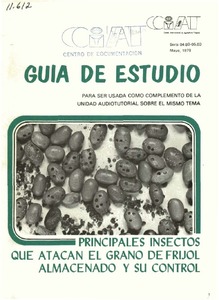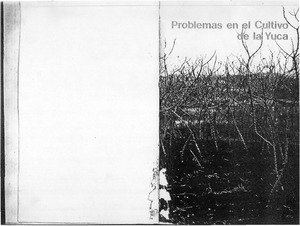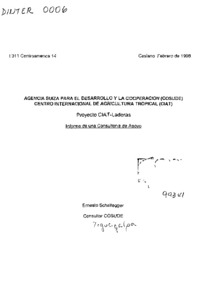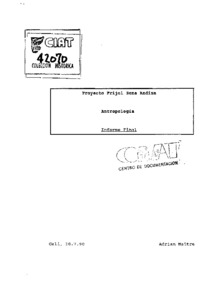land use
AGROVOC URI: http://aims.fao.org/aos/agrovoc/c_4182
Principales insectos que atacan el grano de fríjol almacenado y su control [conjunto audiotutorial]
This audiotutorial unit (cassette, printed script, 140 color slides, study guide, self-evaluation test), prepared by the Communication Support Unit at CIAT, is available for use with a manually or automatically synchronized slide projector/cassette tape recorder. Each unit is available from the Distribution Office at a cost of US$50; photocopies of the study guide alone can be obtained from the Bean Information Center.
Priorities for Vietnam agriculture: similarities and differences with the region
Problemas en el cultivo de la yuca
Information on some diseases and pests that attack cassava, as well as the symptoms induced by nutritional deficiencies and toxicities and damage resulting from the misuse of herbicides are given in this manual. Specific and general recommendations regarding the control of the described problems are included. Disease control on a commercial scale is discussed. Formulae suggested for stake treatment before planting and storage and a key for identifying some cassava diseases are annexed. Color photos on symtomatology are included. (AS)
Proceedings of the First International Symposium on Environment Management and Planning, Battaramulla, Sri Lanka, 23-24 February 2015
Potentials and constraints of little bag silage in Honduras
Proceedings of the Workshop on Irrigation in West Africa: Current Status and a View to the Future, Ouagadougou, Burkina Faso, 1-2 December 2010
Programa de mejoramiento de arroz para suelos ácidos Informe annual 1992b-1993a
Promoting sustainable land management : A clean development mechanism project in the Caribbean savanna of Colombia
Proyecto Frijol Zona Andina: Antropologia: Informe final
Anthropological work carried out by the PROFRIZA project in Cusco over 2 cropping seasons, between 1988-90, are reported. The status of bean cultivation in the region was assessed, as well as the experience acquired in seed production, small farmer management of farming activities, and the integration of farming communities that have old ways of exchanging products and services. Appropriate technology to promote crop improvement was identified, and crop management aimed at achieving good results on just one field, instead of several fields, and perhaps with low yields.







